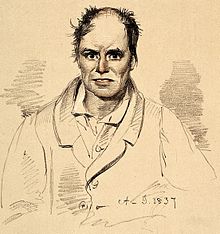User:Mr. Ibrahem/Depression (mood)
| Depression | |
|---|---|
 | |
| Lithograph of a man diagnosed with melancholia with strong suicidal tendency (1892) | |
| Specialty | Psychiatry |
| Symptoms | Sadness, irritability, loss of interest in activities[1][2] |
| Complications | Suicide[1] |
| Duration | > 2 weeks[1] |
| Causes | Major depression, persistent depressive disorder, seasonal affective disorder, post partum depression, premenstrual dysphoric disorder, medical disorders[1][3] |
| Risk factors | Death of a loved one, financial problems, relationship issues[2] |
| Diagnostic method | Based on symptoms[2] |
| Differential diagnosis | Sadness, chronic fatigue syndrome, hypoglycemia[2][4] |
| Treatment | Counselling, medication, electroconvulsive therapy, hospitalization[2] |
| Frequency | Common[1] |
Depression is a state of sadness and loss of interest in activities.[1][2] It can affect a person's thoughts, behavior, feelings, sleep, appetite, and sense of well-being.[1][2] Symptoms such as pain and digestive problems without a clear underlying cause may occur.[1] Complications may include suicide.[1]
The cause is believed to involve both genetic and environmental factors.[2] A family history of the condition increases the risk about 3 fold.[2] It occurs as part of a number of mental disorders including major depression, persistent depressive disorder, seasonal affective disorder, post partum depression, and premenstrual dysphoric disorder.[1][3] It may also occur as a side effect of medication, from substance misuse, or as a result of a medical condition such as cancer, stroke, or chronic pain.[2][3] Episodes may be triggered by the death of a loved one, financial problems, or relationship issues.[2]
Diagnosis is based on symptoms and examination.[2] By definition symptoms must be present every day, nearly all day, for at least two weeks.[1] Blood tests and medical imaging may be done to rule out an underlying medical cause.[2] Conditions that may present similarly include sadness.[4]
Treatment may involve counselling and medication.[2] Hospitalization may be required in those at risk of suicide.[2] Electroconvulsive therapy may be done in those who do not respond to other measures.[2] Relapses are common after treatment.[2] Depression is common.[1] In a given year about 7% of people experience major depression.[2] Young adults are more commonly affected as are females.[2]
References[edit]
- ^ a b c d e f g h i j k l "NIMH » Depression Basics". www.nimh.nih.gov. 2021. Archived from the original on 16 February 2009. Retrieved 2021-02-21.
- ^ a b c d e f g h i j k l m n o p q r s Chand, SP; Arif, H (January 2020). "Depression". PMID 28613597.
{{cite journal}}: Cite journal requires|journal=(help) - ^ a b c Diagnostic and Statistical Manual of Mental Disorders (Fifth ed.). American Psychiatric Association. 2013. pp. 155. doi:10.1176/appi.books.9780890425596.156852. ISBN 978-0-89042-555-8.
{{cite book}}: Cite has empty unknown parameter:|1=(help) - ^ a b Horwitz, Allan V. (2007). The Loss of Sadness: How Psychiatry Transformed Normal Sorrow Into Depressive Disorder. Oxford University Press, USA. p. 3. ISBN 978-0-19-531304-8. Archived from the original on 28 August 2021. Retrieved 21 February 2021.
